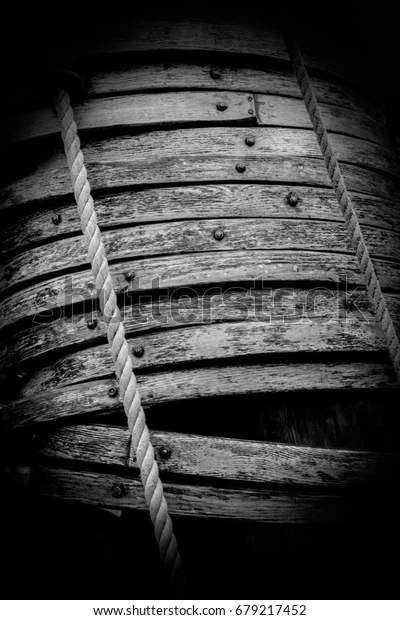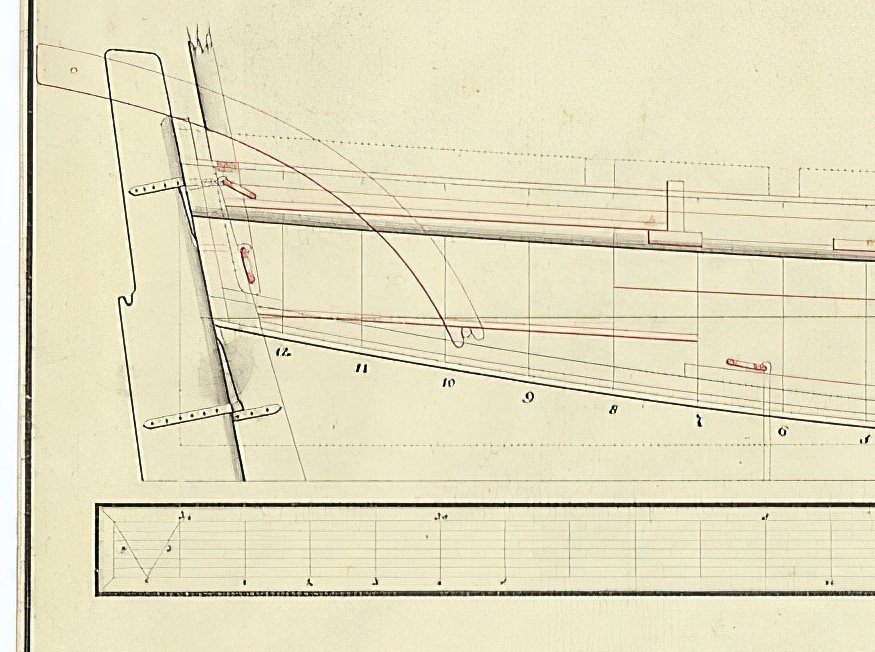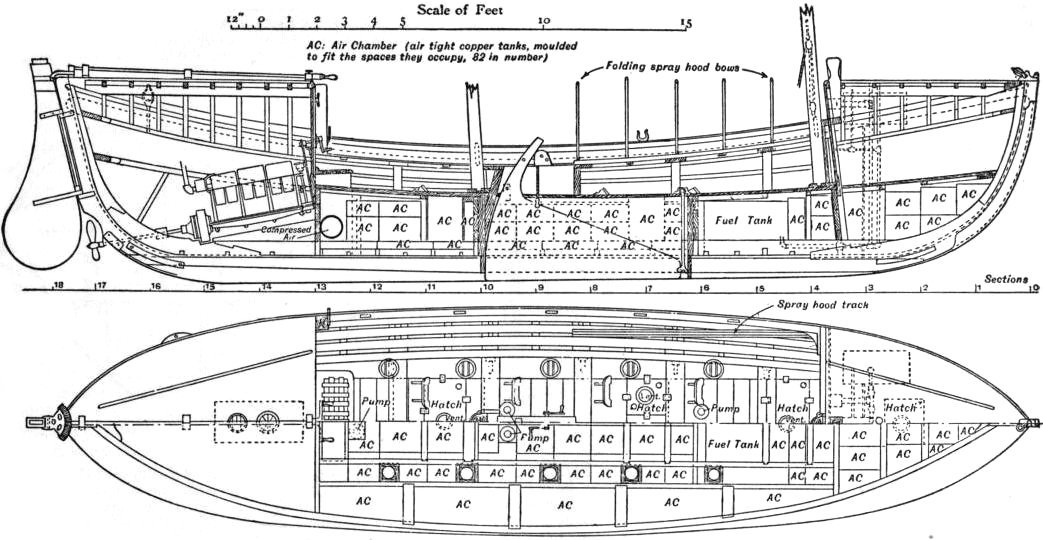-
Posts
8,149 -
Joined
-
Last visited
Content Type
Profiles
Forums
Gallery
Events
Everything posted by allanyed
-
Hi Shipman, I am pretty sure private yards always had contracts to build ships and boats based on those contracts. Two samples below of contracts including an original for a 30 foot long boat and a transcribed contract for two yawls. Allan Contract for two Yawles Contracted this 24th July 90 with the Honoble Thomas Willshaw, Esqre one of the Principall Officers & Commrs of their Majties Navy, for & behalf of their Majties, by me Robert Smith of Langstone Shipwrts and doe hereby oblidge myselfe to build & deliver into their Majties Stores at Portso: free of all charge by the latter and on Augst next ensueing the two Yawles undermentioned of the Dimensions and Scantlins & each fitted with the particulars folling (viz) Long Broad Deepe Yawles of 23ft: ----- 5ft: 7:ins ------ 2ft: 5ins ------- Two Railes of the upper streakes to be made out of the wholewood up and downe Gunnels stuck, 3 Thwarts bound with Iron Knees and ye Transome wth two Iron Knees, the Stateroom stuck an O:G. & planshier for the Gunnwales with two pannells on each side of the backboard, a locker under the after bench and lynings under the bench, Keel, thwart ships 4: ins. up and down 4½ ins. & 4 ins. Keelson 6: ins. broade of 1½ inch plank, timbers of 1½ inch wth 13 ins room and Space, & 10: in. Scarphs to the floor, timberheads to naile to the lower Edge of the binding Strake with bottome boards & Scarr Boards Keelbands & Iron bolts & Rings for Stem and Sterne to row wth 6: oars each to be grav’d and primed to the Waterline and pid in stuff in the inside to the rising at ye rate of 12 s per foot I doe oblidge myself that these boats shall be wrought wth good dry well seasoned oak board of ynch thick in workmanlike manner for wch I am to be paid readdy money at Portsmouth when a bill is made out and signed by the Officers at ye yard as useable.
-

Proportions of Masts and Yards
allanyed replied to Bill Jackson's topic in Masting, rigging and sails
What nation is of interest for your galleon? Keep in mind that there is minimal contemporary data available for the 16th century and earlier. But, as galleons were in use through much/most of the 17th century, the dimensions given in James Lees' The Masting and Rigging of English Ships of War might work for you as the data goes back to 1627 if you are building an English Galleon. If you are looking at Spanish galleons you may be able to get information by contacting the maritime museums in Madrid and in Barcelona. The rigging article by Danny Vadas in the articles data base here at MSW was set up mostly on Lees' work so could be useful for you for the earliest dates up to 1669. Just don't use the Vadas spread sheet for the period 1670-1710 as it is unfortunately incorrect for any ship. Allan -
Thanks Hakan. My very first modeling book the Ship model builders assistant" by Charles G Davis. Gregory and Craig Yep that drawing shows double knees on the center thwart . My fault for missing this as I have the book. I wonder if the same could be said for launches and long boats et al. No matter, this is interesting and a help. Thanks guys Allan
-
Thanks Hakan, I appreciate your response very much. My concern is if Swedish designs apply to other nations, specifically English and Spanish vessels. Can you post a photo of a boat drawing in the book showing the double knees and the grating? I have looked at dozens of contemporary plans, models and contracts from RMG, Preble Hall, the National Archives at Kew and various books but I cannot find even one that shows a pair of single knees on every thwart let alone double knees on every thwart, nor do any show or mention gratings. I do not doubt these may have been used, but it would be great to see a contemporary source such as Chapman showing these. Many thanks for your help! Allan
-
Your build is exemplary! I do wonder about two things. I cannot find any contemporary drawings or models that have gratings or double knees on the thwarts. The thwarts were usually set up with several fixed with a knee on each end and others that were loose with no knees so the could be removed to have room for stowage of various items. Do you, or anyone following your build, know of contemporary models or plans that show gratings and all thwarts fixed with single or double knees. I am fooling around with a long boat model right now and these items are of specific interest. Thank you very much. Allan
-
Thanks for sharing your build, it is nicely done! I have a question about the stay you show in the photos in post #331. The upper most stays did lead through a block at the end of the jib boom as you show and is as described by James Lees in The Masting and Rigging of English Ships of War for your era but would the line be a tarred line (dark) or untarred, (tan)? It seems lines that were tarred did not usually run over sheaves but maybe that is an incorrect statement. I have noticed this on other builds lately and have not been able to find or remember seeing any information on tarred lines running over sheaves in blocks or bees or other instances. TIA for any contemporary based information anyone can share. Allan
- 426 replies
-
- Vanguard Models
- Sphinx
-
(and 1 more)
Tagged with:
-
Totally agree with Keith's comment. There is no need for nails to hold properly shaped planks. They can be held with finger pressure for a minute or so if using PVA or for a few seconds for those using CA glue. Same can be said for filler. If the planks are laid in tight as they should be, no filler is needed. Worst case is to smear a little PVA glue in there SLIGHT gaps and then sand while the glue is wet. The sawdust will fill the gaps and match in color pretty closely for many species of wood, Allan
- 24 replies
-
- OcCre
- bounty launch
-
(and 1 more)
Tagged with:
-
Hi R Welcome to MSW Allan
-
The Bounty launch was about 23' 0" long with a breadth of 6' 9". With this narrow breadth there is a likelihood she was single banked, not double banked as in the posts above. The Bounty launch model has been discussed in great detail here at MSW based on quite a bit of research by members. Below is a drawing that may be of help as well as the scantlings for a 23 foot launch that you can compare with the kit to see what you may want to change or add such as the number of frames, and tholes. The drawing below shows the davit and winch which were likely removed before starting the famous voyage as they would have taken up a lot of space and were of no use anyway. Allan SCANTLINGS Length 23- 0” Breadth 6’ 9” Depth 2’ 9” Feet Inches Room & Space 1 2⅜ Stem, sided 3⅜ Keel, Square Midships 3¾ Post sided at the tuck 3⅜ below 2⅞ fore and aft at the keel 8¼ Transom thick 2½ sided 2 Floor timbers sided 2¼ moulded - at the heads 2⅛ -at the throat 3¾ Futtocks sided below 2 square at the heads 1⅞ Keelson thick 2 broad 9½ Footwaling thick 1 Bottom planking thick ⅞ broad 7 Landing strake broad 7 Upper strake broad 7½ Gunwale deep 3 Thick 3¼ Washboard broad at the bow, if included 6 Rising thick 1 broad 5½ Thwarts fixed thick 2 broad 10 Thwarts loose thick 1½ broad 8 Knee on three fixed thwarts sided 3 Benches thick 1½ broad 11 Deadwood sided 3 Breasthook sided 3 length (each arm) 1 10 moulded at the throat 6 Windlass diameter 8 Chocks thick 3 broad 1 1½ up and down 11¼ Ears sided 6 length 1 3 Rudder breadth at the heel 1 4¾ breadth at the hance 1 0 breadth at the head 6¾ thickness 1 Rudder pintle thick ¼ and gudgeon width 1 quantity two
- 24 replies
-
- OcCre
- bounty launch
-
(and 1 more)
Tagged with:
-
Nate, Depends on the era and maybe the nationality. From James Lees' Masting and Rigging of English Ships of War, pages 2-4 ----The head of the mast was typically left square and did have iron bands and battens. Below the head of the masts, until 1800 there were rope wooldings with a width of 12 inches. There were wooden hoops nailed to the mast at the top and bottom of each woolding. Iron bands replaced the rope wooldings after about 1800. Allan
-

6-pounder, Royal Navy cannon barrel - George III era
allanyed replied to Gabek's topic in 3D-Printing and Laser-Cutting.
This looks like an Armstrong Frederick pattern (circa 1760-1794) which came about when George was made king. There was also the Blomefield pattern which is quite different but also in the George III era as it was introduced in the early 1790's and replaced the Armstrong Fredericks. Allan -
And so you are a trouble maker Craig, 😀 because she is going to kill me when she asks what I would like from Santa this year. The rollers fore and aft are indeed another issue as I have no idea why they are there. You mention C. I have posted below what I believe you are speaking about so others are aware of this item. Please correct me if I am wrong. Thanks for the input Craig, VERY much appreciated! This is one of the most detailed plans I have seen but it has indeed raised questions, including why double lift rings fore and aft. This was a new one for me. Allan
-
Please add my warm welcome to MSW In light of your very well said comment I am surprised no one has mentioned this, but you may want to consider putting your kits aside for the time being and start with a high quality beginner kit to learn good habits and skills. There is a thread here at MSW on this as well as many build logs of beginner level kits that are well designed with clear instructions and drawings such as the three boat series from Model Shipways. https://modelshipworld.com/topic/13703-for-beginners-a-cautionary-tale/#comment-421943 https://modelexpo-online.com/Model-Shipways-Shipwright-3-Kit-Combo-Series_p_5465.html Allan
-
What are pedestals A and B? I can see B possibly being a rest for a boom, but if that is the case, how would it be secured to the boat knowing it will not be in place when not under sail. The boat is from 1801 and identified in the description at the top of the plan as a 31 foot longboat. Thanks Allan
-
There are drawings of secured guns from Congreve's Treatise on the Mounting of Sea Service Ordnance, Falconer's Universal Dictionary of the Marine and Dupin's Voyages dans la Grande Bretagne that can be found on pages 382-388 in volume II of Caruana's The History of English Sea Ordnance For secured guns no lines are lying on the deck. Train tackle is of course removed completely and the running out rigging is frapped. The two most common methods SEEM to be a gun run in, secured and housed and at times the guns could be secured run out. The following are from page 382 of Caruana's The History of English Sea Ordnance ISBN 0-948864-22-2 He does not show any drawings where the guns were turned 90 degrees so they faced fore and aft and were secured to the bulk heads. There may be differences for Armstrong Frederick pattern guns and earlier patterns compared to the Blomefields shown below but I suspect they would all be similar with lines off the deck. Allan
-
The plank expansion plans are extremely useful for dimensional information and supposedly for the shape they show for every strake. This is a question to everyone and anyone: We know planks were spiled to some extent to achieve the shape needed, especially at the bow. But, would there also be some heating and pre-bending in addition to or instead of spiling as needed in areas such as midships, where the bend is less severe and less prone to lifting if edge set. It has been my understanding that these expansion drawings may have been more of a guide rather than a puzzle showing all the pieces and the exact shapes to which they must adhere when being made. Allan
-
As there is no scale on the planking expansion drawing you can check the distance between station lines on each drawing near midships. If both drawings are the same scale I THINK the distance between stations would be the same. On the profile drawing the distance between station lines is about 1.21". What is the distance from station to station on the outer planking expansion drawing near midships? It's a shame there is no scale on the outboard or inboard expansion drawings of the Diana. I checked some others and found the expansion plans of the Squirrel has a scale so it was apparently not universal to include/exclude it. Allan
-
It sounds like you have virtually no experience with wooden ships. If that is the case, many folks here will attest to starting small and learning before tackling a more complex model. It seems a major winner in that category is the three vessel series by David Antscherl available from Model Shipways. https://modelexpo-online.com/Model-Shipways-Shipwright-3-Kit-Combo-Series_p_5465.html is one source, there may be others. You mention wanting a British ship but list Grecian which is American. 😀 Allan
-
Welcome to MSW George. Is this boat for the steam yacht Greta, 1895 or some other vessel and year? In what country was she built? Finding an appropriate motor driven ship's boat might be a bit easier with a little more information. There are a lot of designs I found on the internet including the one below of a 30 foot boat of 1911 but it may be totally inappropriate in design. If you have not already contacted the folks at the the Royal National Lifeboat Institution, they may have some useful information in their archives. https://rnli.org/about-us/our-history/archive-and-library Allan
-
Your work looks great to me. I think most/all of us at MSW hope to improve with experience so you are part of a huge team of like minded enthusiasts. Allan
- 443 replies
-
- Indefatigable
- Vanguard Models
-
(and 1 more)
Tagged with:
About us
Modelshipworld - Advancing Ship Modeling through Research
SSL Secured
Your security is important for us so this Website is SSL-Secured
NRG Mailing Address
Nautical Research Guild
237 South Lincoln Street
Westmont IL, 60559-1917
Model Ship World ® and the MSW logo are Registered Trademarks, and belong to the Nautical Research Guild (United States Patent and Trademark Office: No. 6,929,264 & No. 6,929,274, registered Dec. 20, 2022)
Helpful Links
About the NRG
If you enjoy building ship models that are historically accurate as well as beautiful, then The Nautical Research Guild (NRG) is just right for you.
The Guild is a non-profit educational organization whose mission is to “Advance Ship Modeling Through Research”. We provide support to our members in their efforts to raise the quality of their model ships.
The Nautical Research Guild has published our world-renowned quarterly magazine, The Nautical Research Journal, since 1955. The pages of the Journal are full of articles by accomplished ship modelers who show you how they create those exquisite details on their models, and by maritime historians who show you the correct details to build. The Journal is available in both print and digital editions. Go to the NRG web site (www.thenrg.org) to download a complimentary digital copy of the Journal. The NRG also publishes plan sets, books and compilations of back issues of the Journal and the former Ships in Scale and Model Ship Builder magazines.






